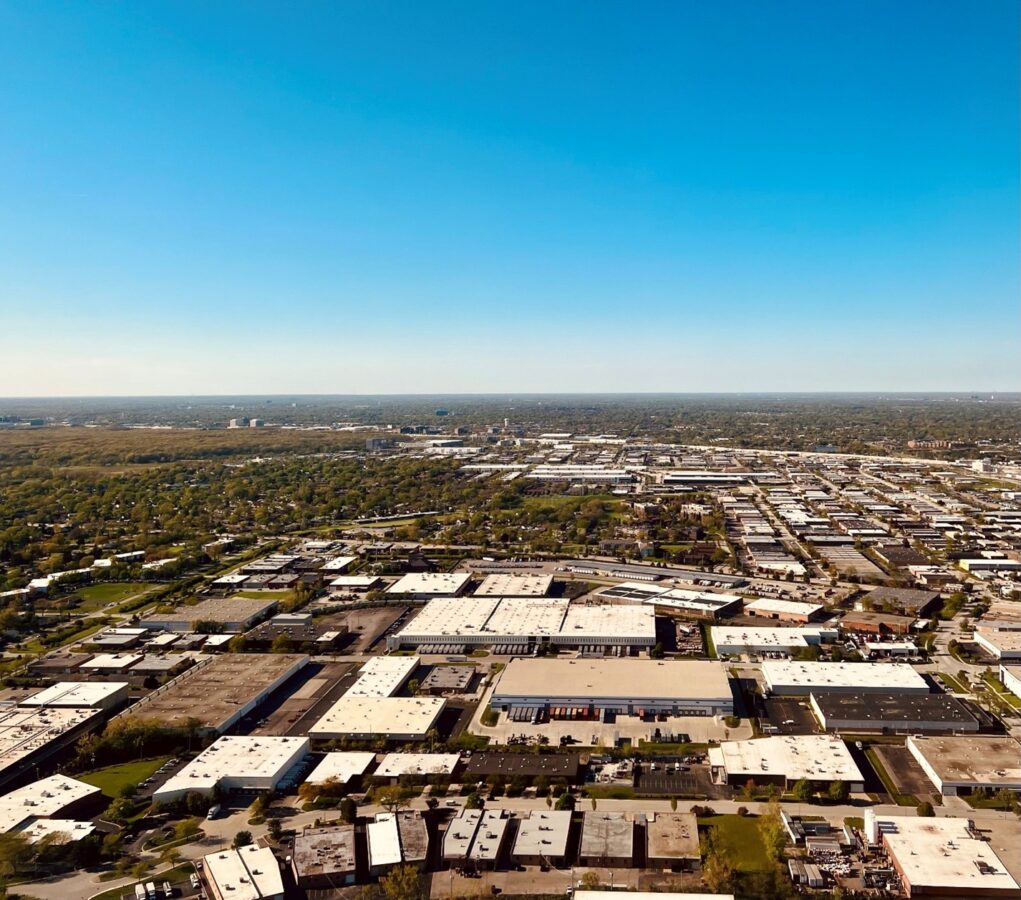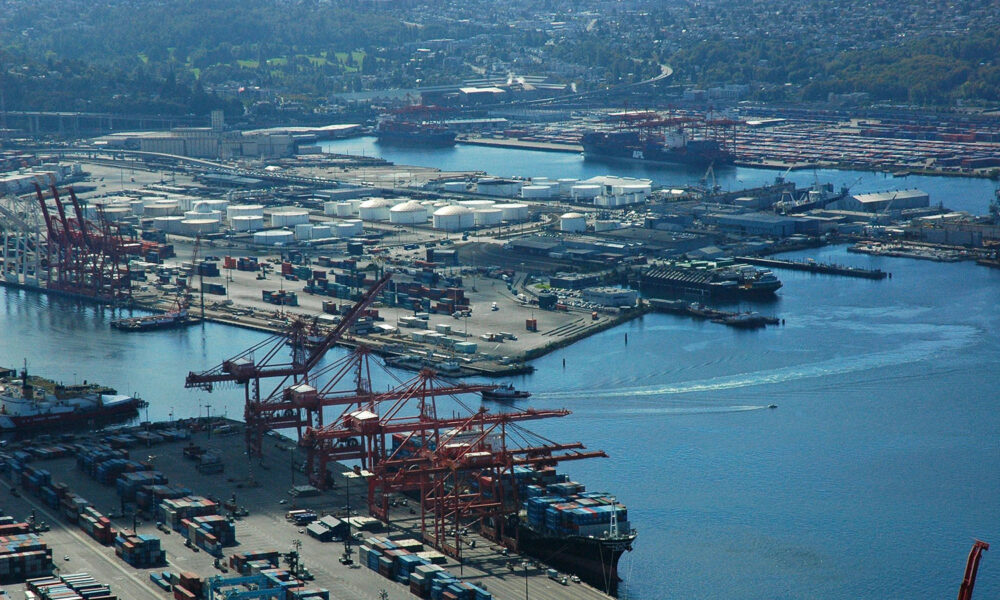The boom in e-commerce over the past few decades has profoundly changed the way we shop, consume, and go about our daily lives. For many of us, long gone are the days when we wait days or weeks for a product to arrive in the mail or at a local store. Today, it may seem odd for a product to take more than 48 hours to reach our stoop or mailroom.
While the shifts in freight systems in response to the boom in e-commerce have led to many efficiencies, they have also influenced a significant rise in the number of new mega-warehouses—crucial hubs in this new system of freight and commerce, but magnets for highly polluting heavy-duty trucks and freight equipment. In our current fossil-fueled freight system, the cost for convenience spans far beyond membership fees for expedited deliveries. Exposure to pollution from heavy-duty vehicles results in thousands of premature deaths and nearly $100 billion in monetized negative health impacts each year, according to UCS modeling.
As our freight system has evolved to meet the demands of consumers, it must also evolve to address its impacts on public health and the planet. One strategy, called Indirect Source Rules or “ISRs,” is a promising solution to reduce pollution around freight hubs and resulting negative health impacts to nearby communities and the planet.

Today’s mega-warehouses facilitate and attract increased freight pollution
To facilitate this boom, more and more sprawling warehouses have popped up around the nation. These facilities are largely concentrated around areas with existing logistics infrastructure—ports, railyards, and the like. Between 2010 and 2021, not only did the frequency of new warehouse construction rise, but the size of these new warehouses increased by nearly 150 percent compared to the norm. Where the size of new warehouses typically hovered around 35,000 square feet since the 1980s, the warehouses of today are often nearly three times the square footage. These larger new warehouses facilitate significant increases in on-road freight activity and have upwards of four times the number of loading docks than those constructed before the e-commerce boom.
The increase in loading docks is of particular importance when looking at the air and climate pollution impacts from warehouses. Although warehouses themselves are often not significant sources of air pollution, they attract high concentrations of heavy-duty trucks, which are the nation’s largest source of nitrogen oxides, a key contributor to ground-level ozone pollution. Additionally, heavy-duty trucks are responsible for over half of fine particulate pollution emitted from on-road vehicles as well as a growing share of climate-warming emissions.
ISRs, however, can create opportunities to reimagine the pollution catalysts of e-commerce into solutions for air pollution and climate change—the ever-increasing number of loading docks can now be fast-charging stations for electric trucks and the ballooning footprint of warehouses present opportunities for solar energy generation and battery storage.

Addressing pollution from warehouse operations
The clearest way to reduce harmful pollution from our freight system is by electrifying trucks. Even when considering their fuel production, zero-emission trucks (ZETs) produce a fraction of the pollution that combustion trucks emit. Over the past several years, the availability of ZETs has expanded, and their deployments have increased significantly each year. Even as federal leadership on freight electrification has down throttled, ISRs adopted by state and local governments can help maintain the momentum the momentum toward electric truck deployments.
Currently, several states are pursuing ISR policies that could help freight facilities like warehouses, ports, and railyards influence the adoption of cleaner trucks and reduce air pollution in communities most impacted by on-road freight. In a nutshell, ISRs require covered freight facilities to reduce pollution associated with the activities that they facilitate or attract—such as truck trips, ship and locomotive visits, container handling equipment or other associated sources of pollution. Covered facilities can choose from a menu of flexible actions and strategies to meet their requirements under the ISR. Unlike state regulations that set clean air standards for vehicles and engines more stringent than federal standards, ISRs do not require approval from the Environmental Protection Agency.
Today, ISRs implemented in Southern and Central California and have shown promising results at reducing emissions from freight operations. Since its initial implementation in 2022, the South Coast Warehouse ISR has influenced meaningful increases in zero-emission truck trips, electric cargo handling equipment usage, electric truck charging, and warehouse solar power generation. In fact, between 2021 and 2023, warehouses covered under the program saw electric truck visits nearly triple and electric truck charger usage increased by over 20-fold. To support these activities, solar power usage at warehouses increased from just under three gigawatt hours to over 85 gigawatt hours during this time.

While these improvements are a relative drop in the bucket when considering the actions needed to address the historic pollution issues in the region—residents in San Bernardino County experience unhealthy concentrations of ground-level ozone over 360 days annually—they are a strong starting point to create additional avenues to electrify our freight system. Arguments against ISRs have asserted that they may stifle productivity, but the continued development of warehouses in the region suggests otherwise. Additionally, several studies have shown that fluctuations in fossil fuel prices have meaningful impacts to food prices; given the relative stability of electricity prices compared to fossil fuels prices and the significantly lower operating costs of electric trucks, this suggests that a zero-emission freight system has the potential to help stabilize and lower certain costs for consumers, although more research is needed to directly address this question.

Legislation in multiple states to expand ISRs
Both California and New York are currently considering legislation to expand the adoption of ISRs. Although legislative authorization is typically not necessary for local or regional ISRs to be adopted, these bills both affirm the authorization and require that statewide action be taken to reduce pollution from freight operations. UCS is working with both local and national partner organizations to promote the passage of these important pieces of legislation.
In California, Assembly Bill 914 would direct the California Air Resource Board to adopt a statewide ISR that quantifies, controls, and reduces emissions from indirect sources. If adopted, the bill could provide new pathways to incentivize freight electrification statewide through expanding access to electric truck charging at warehouses and ports, accelerating deployment of electric trucks and cargo equipment, and increasing on-site renewable energy generation to support these efforts.
New York’s Clean Deliveries Act (S1180A/A3575) would, among other things, direct the state’s Department of Environmental Conservation to develop a statewide ISR to address pollution from warehouses. Where e-commerce warehouses in the state are not currently subject to oversight with respect to the pollution they facilitate and attract, the bill would initiate a facility-by-facility review for both new and existing warehouses larger than 50,000 square feet and require warehouses to begin reducing their indirect pollution through flexible mitigation tactics. Importantly, the bill would require enhanced pollution reductions at warehouses near sensitive receptors, such as schools and communities overburdened by freight pollution.
According to Environmental Defense Fund research, over five million New Yorkers live within half a mile of a warehouse. These warehouses generate over 250,000 truck trips each day statewide and are disproportionately located in low-income and disadvantaged communities. The Clean Deliveries Act would help to relieve pollution burdens in freight-adjacent communities by increasing the deployment of ZETs and electric cargo equipment and increasing the quality of information available to public health officials and communities to better understand and address the historic and persistent problem of inequitable access to clean air among lower-income communities.
ISRs give states another tool to lead toward a cleaner freight system
Unfortunately, progress toward a cleaner, more efficient, and modern freight system is jeopardized under the current Trump administration. The White House and Congress have sought to roll back over half a century of legal precedent that allows California to adopt more protective vehicle emission standards (and for other states to choose to follow these standards), stalled federal leadership toward a national electric truck charging network, and are attempting to claw back federal investments that would both modernize and clean our domestic freight system.
Although our federal political climate renders many economically and technologically feasible actions to accelerate zero-emission freight politically infeasible, ISRs present an opportunity for states to take the baton and lead toward a cleaner, modern, energy efficient freight system. At this moment, policies like ISRs are an important and strategic tool for continuing the meaningful progress made over the past several years.

